7 Overhyped European Cities To Skip—And 10 Authentic Ones Worth Exploring
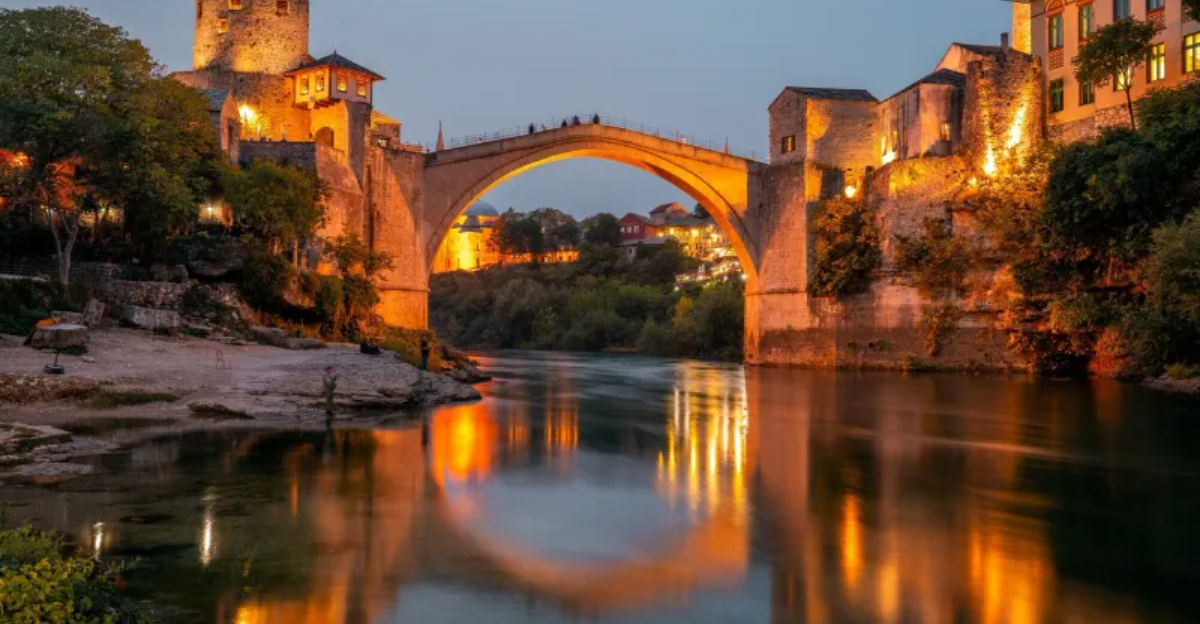
Tired of fighting through selfie sticks and overpriced cafes? Europe’s most famous cities often promise magic but deliver crowds and tourist traps instead.
I’ve spent years exploring this continent and discovered that sometimes the real treasures lie beyond the Instagram hotspots. For every overcrowded metropolis, there’s a hidden gem offering authentic experiences at half the price and double the charm.
Here’s my honest take on which European destinations deserve the hype—and which alternatives will give you the genuine European experience you’re actually looking for.
1. Paris, France (overhyped)
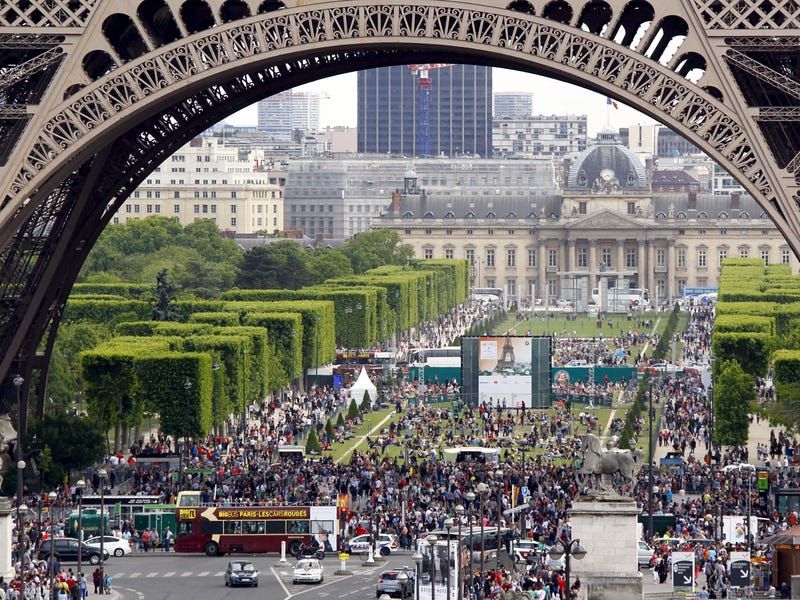
Expectations soar when visiting the City of Light, but reality often hits hard with €7 coffees and hour-long lines at the Louvre. The famous Parisian rudeness isn’t just a stereotype—it’s what happens when locals face 30 million tourists yearly in their home.
Most visitors spend their time shuffling between the same overcrowded landmarks, taking identical Eiffel Tower photos. Meanwhile, restaurants near tourist zones serve mediocre food at premium prices.
If you must visit, venture beyond the central arrondissements where real Parisians live and eat. Better yet, consider exploring France’s equally charming but less trampled cities like Lyon or Bordeaux.
2. Venice, Italy (overhyped)
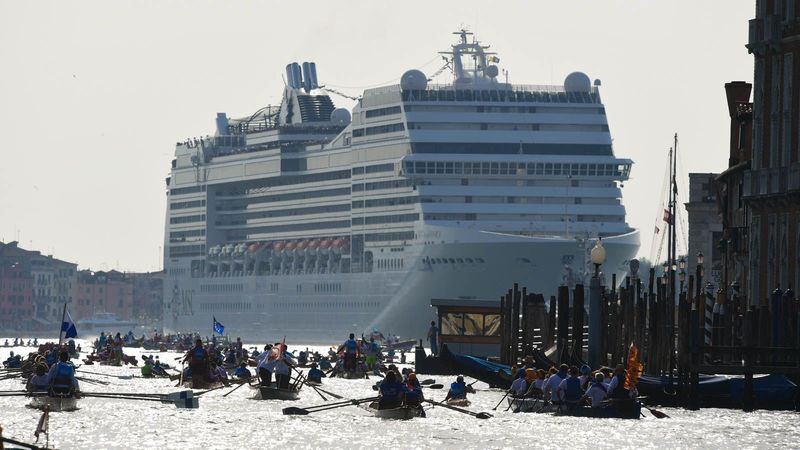
Venice drowns—not just in water, but in over 30 million tourists annually who flood its tiny streets and fragile infrastructure. The romantic gondola ride you’ve dreamed about? It costs €80 for 30 minutes and navigates through canals that sometimes smell of sewage.
Authentic Venetian culture struggles to survive as locals abandon their hometown, unable to afford living costs inflated by tourism. Restaurants serve frozen meals at premium prices, and the city has become essentially an open-air museum.
Cruise ships tower over the historic buildings, damaging foundations and ecology while disgorging thousands of day-trippers who contribute little to the local economy but add greatly to the congestion.
3. Amsterdam, Netherlands (overhyped)

Amsterdam’s charm gets buried beneath waves of partying tourists who treat this historic city like an adult playground. The infamous Red Light District has become a human safari where visitors gawk at sex workers while clutching their cameras despite photography bans.
Housing prices have skyrocketed as Airbnbs replace residential apartments, pushing locals to the suburbs. The city center increasingly resembles a theme park designed for weekend visitors rather than a living, breathing community.
Bicycle traffic jams form as tourists wobble uncertainly along narrow lanes, causing headaches for locals who rely on cycling for daily transportation. Even the famous coffee shops now cater primarily to one-time visitors rather than serving as the relaxed social spaces they once were.
4. Dubrovnik, Croatia (overhyped)

Game of Thrones transformed this once-sleepy medieval town into a tourist nightmare. During summer months, Dubrovnik’s narrow streets become impassable as cruise ships disgorge up to 10,000 visitors daily into a Old Town that measures just 0.1 square miles.
The city wall walk, while spectacular, means shuffling along in a human conveyor belt during high season. Local life has largely vanished from the historic center as residents sell or rent their homes to tourists and move elsewhere.
Prices inside the walls have skyrocketed beyond what most Croatians can afford. The authentic Dalmatian culture that made Dubrovnik special has been replaced by Game of Thrones tours and overpriced seafood restaurants catering exclusively to one-time visitors.
5. Santorini, Greece (overhyped)
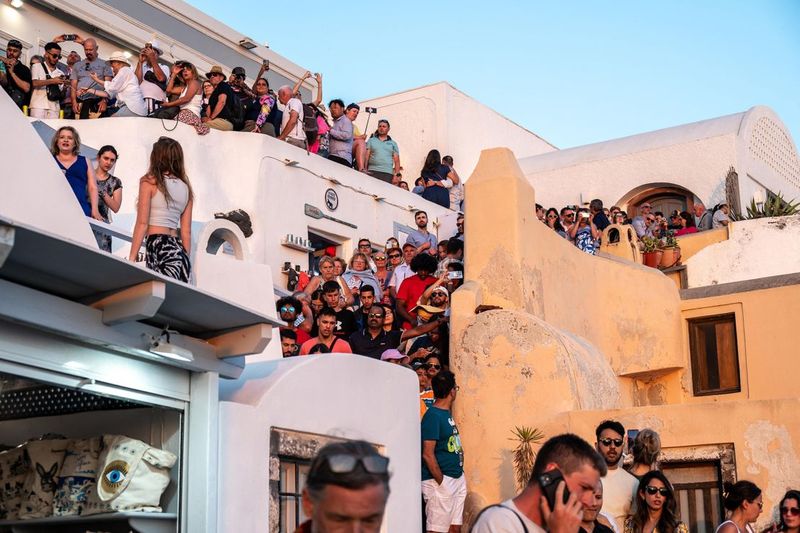
Those perfect blue-domed church photos on Instagram? They’re taken at 5 AM before the crowds arrive—or heavily edited to remove the hundreds of other tourists jostling for the same shot. Santorini has become a victim of its own beauty.
Cruise ships dump thousands of day-trippers into tiny Oia and Fira daily, creating human traffic jams along the narrow cliffside paths. Many visitors spend more time waiting in line for photos than actually enjoying the island’s natural beauty.
Prices have reached absurd levels—€15 for a basic cocktail isn’t uncommon. Meanwhile, the island struggles with water shortages and waste management issues as infrastructure strains under tourism pressure that the volcanic landscape was never meant to support.
6. Barcelona, Spain (overhyped)
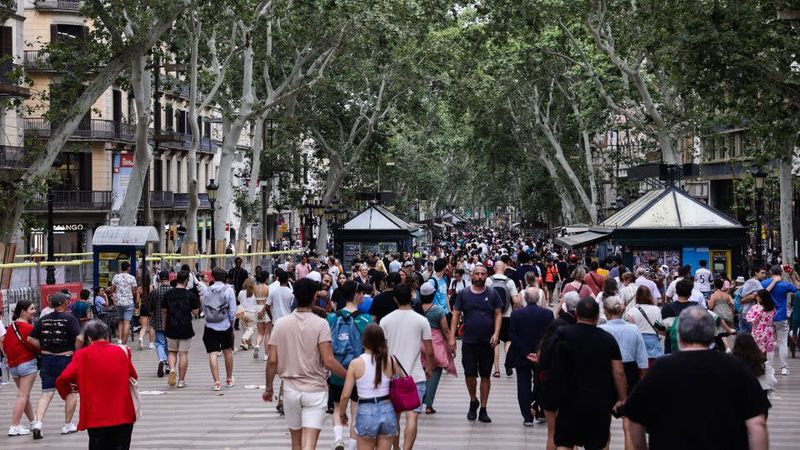
Barcelona’s residents have reached their breaking point with tourism, even staging protests with signs telling visitors to go home. This tension creates an uncomfortable atmosphere as you navigate La Rambla, a street so packed with tourists and scammers that locals avoid it entirely.
Gaudí’s masterpieces require booking tickets days in advance, then viewing them alongside hundreds of others. The famous beach? Overcrowded and often dirty, with aggressive vendors interrupting any chance of relaxation.
Housing costs have exploded as apartments convert to tourist rentals, forcing locals from neighborhoods like Barceloneta. The authentic Catalan culture that made Barcelona special is increasingly hard to find as businesses cater to one-time visitors rather than community needs.
7. Prague, Czech Republic (overhyped)

Prague’s stunning Old Town has essentially become an open-air museum where authenticity goes to die. The historic center now houses more souvenir shops selling Russian nesting dolls (not even Czech!) than businesses serving locals. Astronomical Clock viewings involve hundreds of tourists pointing phones skyward.
Pub crawls dominate the nightlife, with drunken visitors stumbling through streets where families once lived. Charles Bridge requires Olympic-level maneuvering skills to cross during daylight hours as tourists stop abruptly for photos.
Many restaurants near attractions serve mediocre food at inflated prices with “tourist menus” in multiple languages—a reliable warning sign. The city’s undeniable beauty remains, but experiencing it without frustration requires visiting during winter months or exploring neighborhoods well beyond the castle district.
8. Ljubljana, Slovenia (authentic)

Ljubljana offers everything travelers love about Europe without the crowds or inflated prices. The emerald Ljubljanica River winds through a pedestrian-only old town, where locals still outnumber visitors at riverside cafés. Dragon Bridge and Triple Bridge provide perfect photo spots without the need to wake at dawn to avoid crowds.
Slovenian cuisine shines in unpretentious restaurants serving local specialties like štruklji (rolled dumplings) and prekmurska gibanica (layer cake). Prices remain reasonable—a quality coffee costs just €1.50, while excellent local wines run €3-4 per glass.
The city’s compact size means everything lies within walking distance, though public bikes make exploration even easier. Ljubljana Castle provides panoramic views after a short hike or funicular ride, and locals are genuinely pleased to share their city with appreciative visitors.
9. Porto, Portugal (authentic)
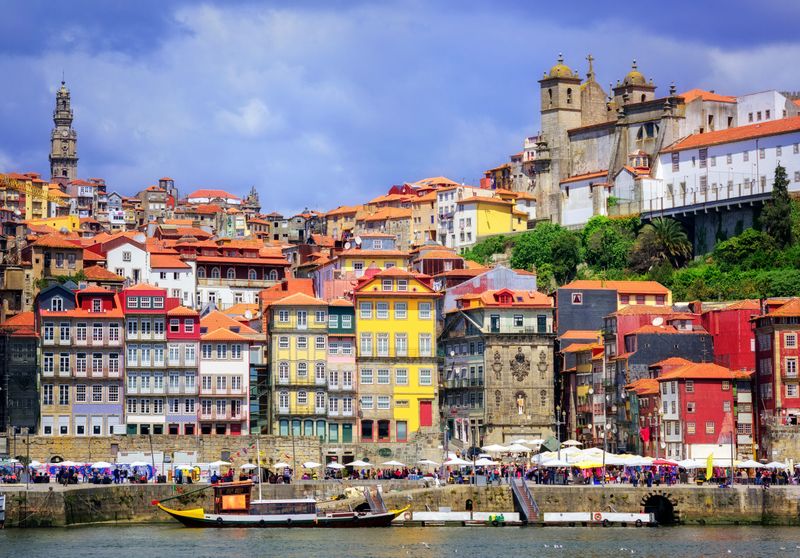
While Lisbon struggles with overtourism, Porto maintains its working-class soul despite growing popularity. The UNESCO-listed Ribeira district cascades down to the Douro River in a tumble of colorful facades where laundry still hangs from windows of occupied homes.
Porto’s food scene prioritizes substance over style. Traditional tascas serve enormous francesinha sandwiches and fresh seafood at prices locals can afford. Port wine cellars offer tours and tastings for under €15, often conducted by family members rather than corporate staff.
Morning fog rolling off the river creates magical moments on the Dom Luís I Bridge. Though tourism grows yearly, Porto’s industrial heritage and authentic working port keep it grounded. The city embraces visitors without surrendering its identity—the highest compliment for any destination.
10. Ghent, Belgium (authentic)
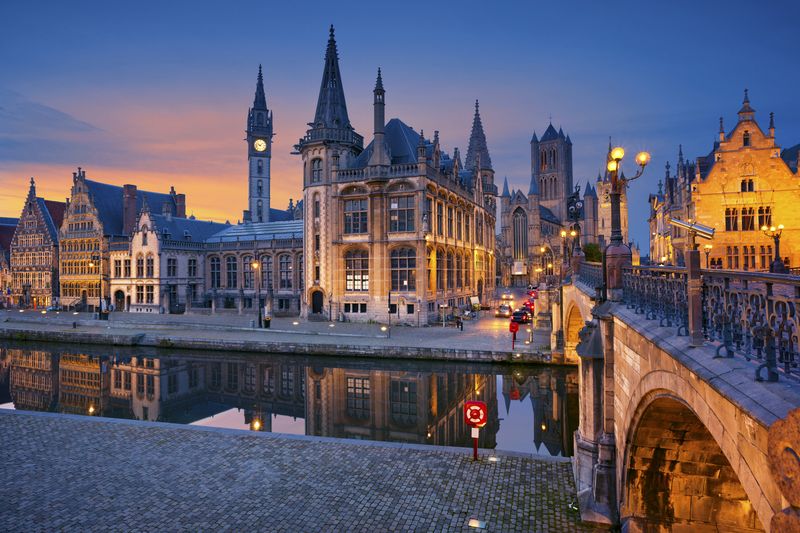
Ghent delivers everything travelers expect from Bruges without the tour buses and chocolate shops aimed solely at tourists. Medieval architecture lines canals where students (20,000 attend university here) gather at waterside bars that locals actually frequent.
The Gravensteen Castle rises dramatically in the city center, while the magnificent altarpiece “The Adoration of the Mystic Lamb” draws art lovers to Saint Bavo’s Cathedral. Unlike in Brussels or Bruges, most restaurants serve Belgian classics like waterzooi and stoofvlees because locals—not tourists—are their primary customers.
Ghent embraced vegetarianism long before it was trendy, with Thursday designated as official meat-free day citywide. The city comes alive after dark when buildings illuminate along the canal, creating postcard-worthy scenes you can enjoy without battling selfie sticks.
11. Tallinn, Estonia (authentic)
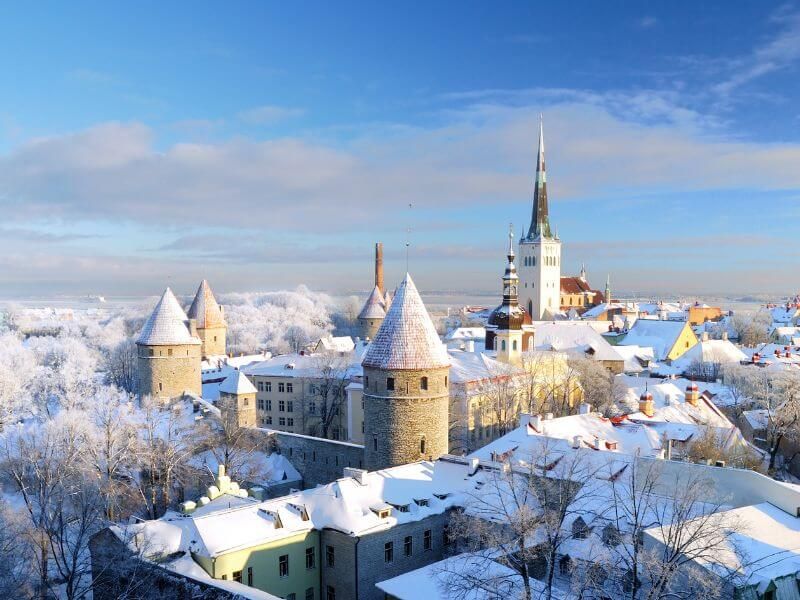
Tallinn’s medieval old town feels like stepping into a fairy tale, with its intact city walls and turreted gates. Despite being a UNESCO World Heritage site, it functions as a living neighborhood where Estonians shop and dine alongside visitors.
Beyond the old town lies Kalamaja, a former fishing district turned creative hub. Wooden houses painted in cheerful colors now host design studios, craft breweries, and the fantastic Telliskivi Creative City—an abandoned factory complex transformed into Estonia’s hippest cultural center.
Estonian cuisine surprises with its sophistication at reasonable prices. Try elk carpaccio or Baltic herring at restaurants where locals celebrate special occasions. During winter, the old town transforms under snow into a magical landscape straight from a storybook, with far fewer tourists braving the Baltic chill.
12. Tbilisi, Georgia (authentic)
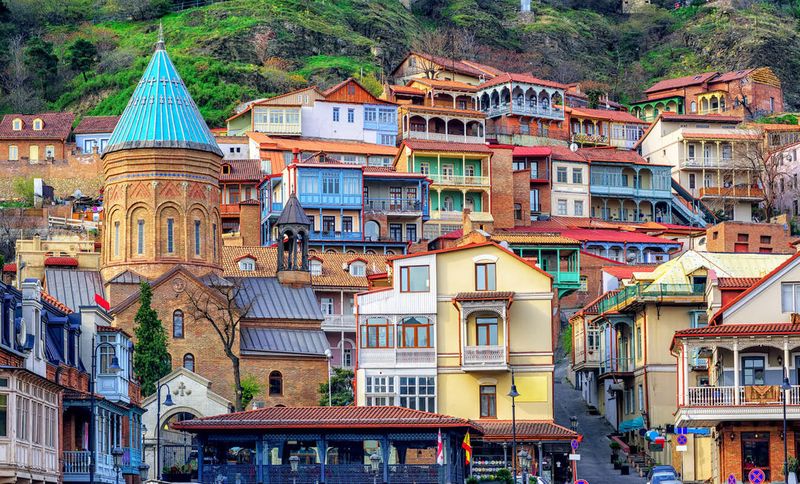
Tbilisi delivers an intoxicating blend of East meets West that feels utterly distinct from anywhere else in Europe. Ancient domed sulfur baths neighbor crumbling Art Nouveau mansions with wooden balconies, while Orthodox churches share streets with sleek modern architecture.
Georgian hospitality isn’t a tourism slogan—it’s a genuine cultural cornerstone. Meals become multi-hour affairs as locals insist visitors try “just one more” dish or toast with chacha (Georgian grappa). The cuisine ranks among Europe’s most underrated, with khachapuri (cheese bread) and khinkali (soup dumplings) worthy of obsession.
Prices remain remarkably affordable despite growing popularity. A feast with wine costs around $15 per person, while quality accommodations run $30-50 nightly. The city’s dramatic setting in a river valley surrounded by mountains provides endless panoramic viewpoints.
13. Lviv, Ukraine (authentic)
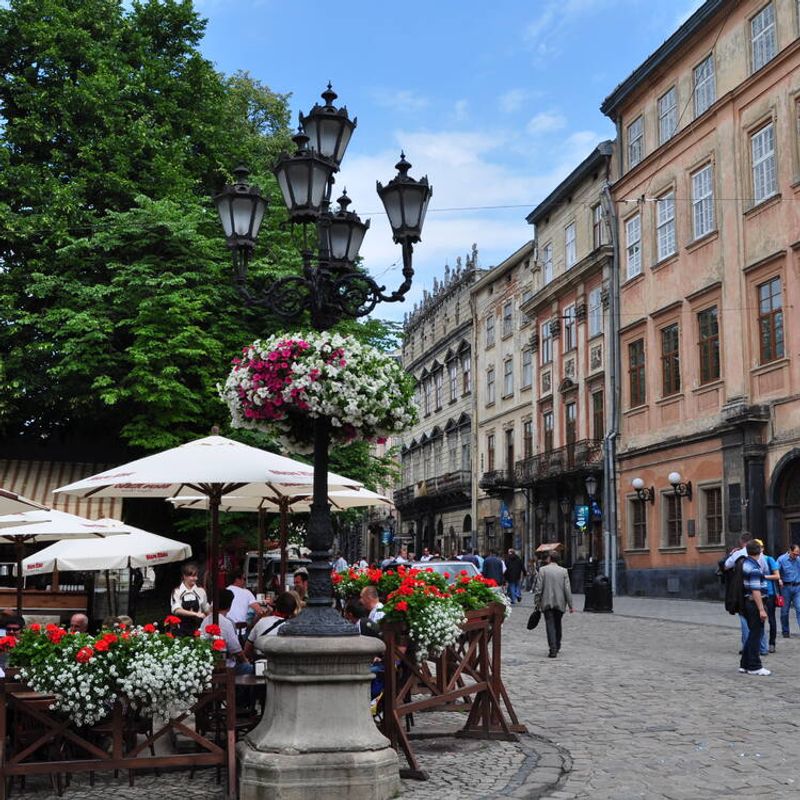
Despite ongoing conflicts elsewhere in Ukraine, Lviv continues to showcase the country’s cultural richness from its position near the Polish border. The UNESCO-listed old town blends Renaissance, Baroque, and Art Nouveau influences in a walkable center where Ukrainian remains the primary language heard on streets.
Coffee culture thrives in Lviv, which claims to have invented the beverage served with melted chocolate. Themed cafés like the underground mining-inspired “Copper” or the Jewish-themed “Under the Golden Rose” offer experiences beyond mere caffeine.
Market squares buzz with local life rather than tourist shows. Restaurants serve traditional Ukrainian dishes like borscht and varenyky (dumplings) to primarily domestic crowds. The city’s location off most international tourism radars means visitors experience authentic culture without the performance aspect that overtourism creates.
14. Mostar, Bosnia & Herzegovina (authentic)

Mostar’s famous bridge rightfully draws visitors, but most come on day trips from Dubrovnik, missing the soul of this resilient city. Staying overnight reveals a different Mostar—one where calls to prayer echo across the Neretva River as locals gather at riverside cafés serving strong Bosnian coffee for less than €1.
War damage remains visible on some buildings, serving as powerful reminders of recent history. Locals willingly share personal stories that provide context no guidebook can match. The contrast between Ottoman-era architecture in the old bazaar and Yugoslav-era apartment blocks tells Bosnia’s complex story through its cityscape.
Family-run restaurants serve enormous portions of ćevapi (grilled minced meat) and dolma (stuffed vegetables) at prices that seem like misprints compared to coastal Croatia. Nighttime brings a magical atmosphere as bridge lights reflect on the emerald river.
15. Colmar, France (authentic)
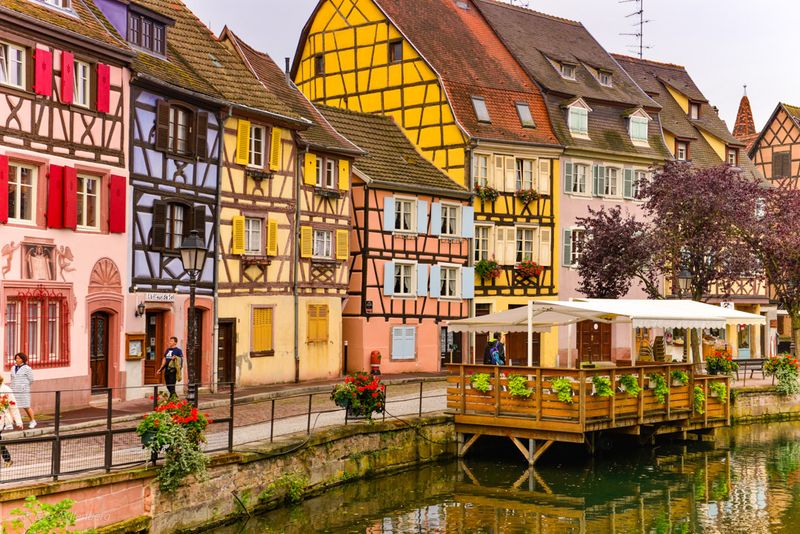
Colmar looks like the town that inspired Disney’s Beauty and the Beast, with half-timbered houses painted in pastels lining canals in the aptly-named “Little Venice” district. While day-trippers visit, they rarely stay overnight, meaning mornings and evenings belong to locals and savvy travelers.
Alsatian cuisine blends French and German influences into something uniquely delicious. Traditional winstubs (wine taverns) serve tarte flambée and choucroute garnie alongside local Rieslings and Gewürztraminers from vineyards visible from town. The Unterlinden Museum houses the magnificent Isenheim Altarpiece without the crowds of more famous European museums.
Christmas transforms Colmar into a storybook setting with markets filling multiple squares. Even during this peak season, the atmosphere remains authentically Alsatian rather than a performance for tourists—locals still outnumber visitors at most events.
16. Bologna, Italy (authentic)

Bologna offers everything travelers seek in Italy without the crowds of Florence or Venice. Medieval porticoes provide 40km of covered walkways connecting the city, while Europe’s oldest university (founded 1088) ensures a youthful energy fills historic streets.
Food obsession defines Bologna—they don’t call it “La Grassa” (The Fat One) for nothing. Authentic trattorias serve hand-rolled tagliatelle al ragù (the real Bolognese) and mortadella in its birthplace for half what you’d pay in tourist-centered Italian cities. Markets like Mercato delle Erbe remain shopping destinations for locals rather than Instagram backdrops.
The iconic leaning towers of Asinelli and Garisenda rival Pisa’s but attract fraction of the visitors. Aperitivo culture thrives with pre-dinner drinks accompanied by buffets of regional specialties, creating natural opportunities to mingle with Bolognesi who remain genuinely welcoming to appreciative visitors.
17. Valletta, Malta (authentic)
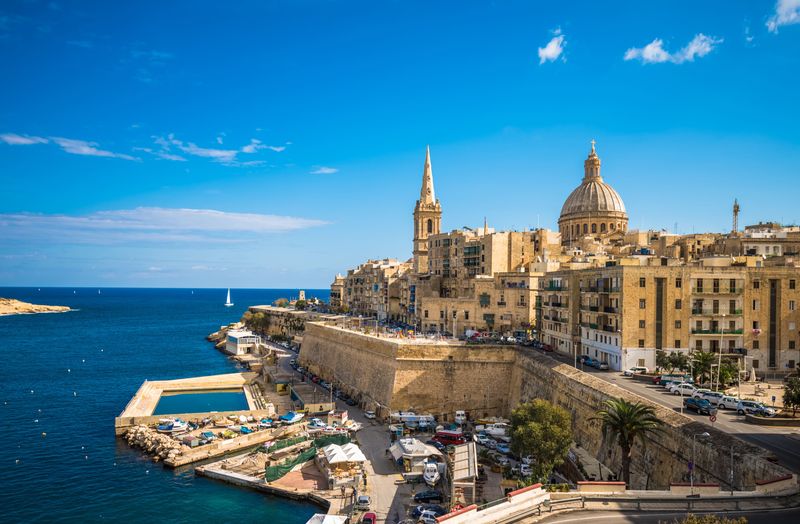
Valletta packs more history per square inch than almost any European capital. Built by the Knights of St. John in the 1500s, the entire walled city is UNESCO-listed yet remains a working capital rather than a museum piece. Residents still hang laundry from baroque balconies and shop at centuries-old markets.
Maltese cuisine reflects the island’s position at the crossroads of Mediterranean cultures. Try pastizzi (savory pastries) from hole-in-the-wall bakeries or rabbit stew in restaurants where three generations of family might be working together. Local Cisk beer and surprisingly good Maltese wines cost a fraction of prices in more touristy Mediterranean destinations.
The compact size means you can walk across the entire city in 20 minutes, though the steep streets provide quite a workout. Harbor views rival any in Europe, especially from the Upper Barrakka Gardens at sunset when fortress walls glow golden.
